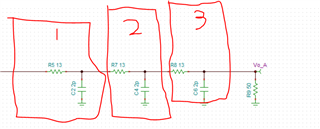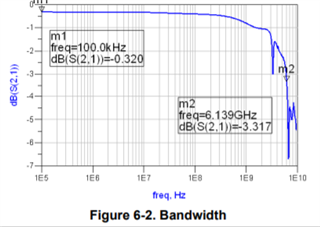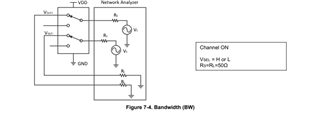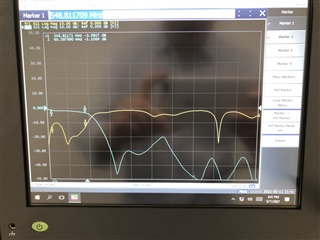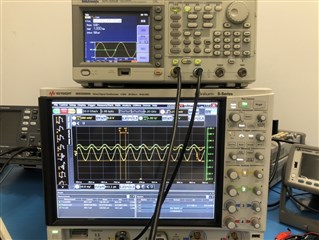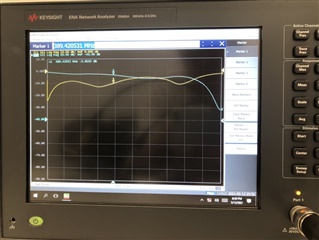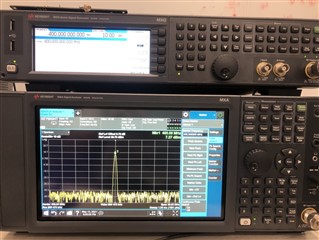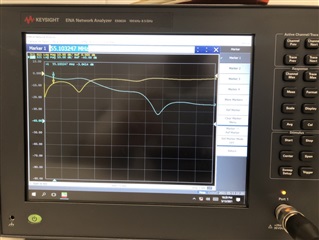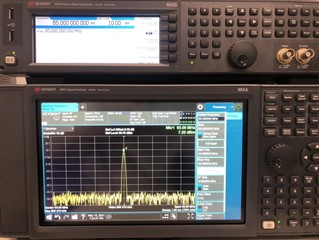1. What is the difference in bandwidth between a single tmux136 chip and three tmux136 chips in series, or the bandwidth is not affected by the multi-cascade of chips.
2. The bandwidth (-3dB) written in the specification: 6.1GHz. The Bandwidth graph also shows that when the bandwidth is within 1G, it is dB(S(2,1))>-0.5. The frequency response within 1G is very good. The above is a straight line, but we found that it is not. At 100MHz, there is a situation of dB(S(2,1))<-1.5. Does -3dB also appear periodically in the 1GHz bandwidth range.
3. If it can be achieved, what should be paid attention to when designing a multi-cascade chip, so that the bandwidth can reach the bandwidth shown in the Bandwidth curve of the specification. When the bandwidth shown in the Bandwidth curve of the specification is within 1G, it is dB(S(2,1))>-0.5, within 1G The frequency response is an approximate straight line.
4. Do you use the usual test method for testing bandwidth, and if not, what test method do you use?


